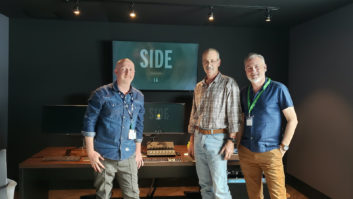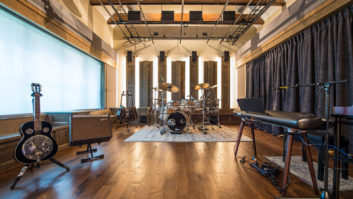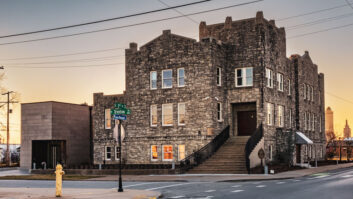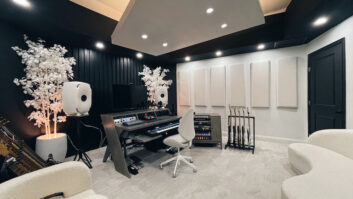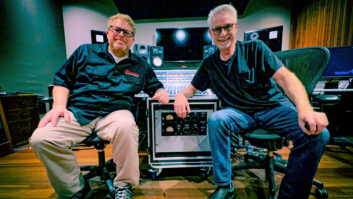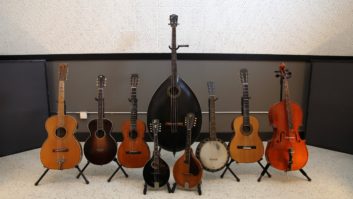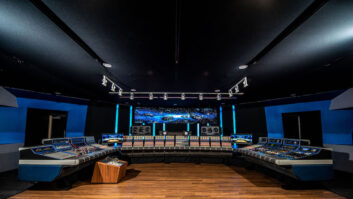TEN QUESTIONS TO ANSWER BEFORE YOU HEAD TO THE BANK
As with any major financial endeavor, a studio construction
project requires careful planning and a solid business plan. Here
are some points — financial, entrepreneurial and technical
— to consider before approaching your lender, brought to you
by Dave Malekpour of Professional Audio Design.
- How do I position my facility to succeed?Research who is currently serving your targeted customers in
your market and at what price points and levels of service. Then
figure out what competitive advantage or unserved niche will give
you a core clientele. It’s generally better to be more focused and
less broad in your services. - What must I know about the competition?That it’s essentially local. Even if you’re a world-class studio
in New York or Los Angeles competing for star acts, you’re in
competition with other New York or L.A. studios for the acts who
decide to record or post in those cities. The question remains: Why
should they choose you over the studio down the block? - What advantage does a commercial studio offer over home and
project studios?The room itself. With so much pro-level gear and software
available for home and project studios, the excellent acoustics
provided by a well-designed commercial studio are a major draw. And
don’t forget the amenities that can distinguish the pro studio from
non-professional sites. - Should I build from the ground up or remodel an existing
space?Everyone’s fantasy is building a studio from the ground up, but
you are unlikely to do so, especially in a major market where land
is at a premium. Besides, remodeling or building out an existing
structure has certain advantages: The basic infrastructure (i.e.,
plumbing and power) will be in place, while zoning issues are
typically easier to navigate than with new buildings. Your
acoustician or studio designer beforehand can help evaluate
proposed sites. Your rental agreement should include up-front
provisions for studio operations, such as noise levels, 24-hour
operation, etc. - How do I pick a designer?Don’t go by reputation alone. Each designer offers different
qualities. Visit rooms designed by the people you are considering
and pick the one whose taste, as well as acoustic expertise,
matches your needs. - Should I lease or buy equipment?Leasing big-ticket gear requires a smaller outlay of money up
front; also, the equipment typically pays for itself as it’s used,
and it’s easier to acquire a lease than a loan. Banks will want to
see business plans, tax returns and require additional security.
Leasing also makes upgrading easier, has tax advantages and is a
good way for a new business to establish credit. - How do I create a budget for my facility?Calculate the realistic return. Establish the going day/hour
rate in your market for the facility you envision. New studios
should calculate income on the basis of 15 rented days per month
— a solid figure for entering a market. If the day rate is
$1,200, then your monthly income is $18,000. Out of this, you have
to cover rent, salaries, utilities and other operating costs, as
well as the costs of carrying any capital investment. A typical
equipment lease runs 60 months. A ballpark figure is paying $2,500
a month for every $100,000 worth of gear leased. With studio gear,
the goal is to pay off the equipment (or amortize it) over five
years, just about the time to upgrade. The effective lifespan of
computer gear is shorter — about three years. For a $100,000
digital workstation, $33,000 a year represents the cost of
operating the equipment (and not profit) for the three-year term it
would take to pay it off. If the equations between capital
investment, operating expenses and return don’t balance, then you
need to reexamine your business plan. If you’re not a numbers
person, hire an accountant. - What’s the most common budgeting mistake?Underestimating the cost — and importance — of
wiring and installation. Up to 20% of the total equipment budget
goes to installation and wiring. Interconnections for a digital
work environment are fewer, but cost savings are generally
cancelled out by the costs of routers, digital patchbays and more
expensive cables. Gear can be fixed, upgraded and enhanced; but
once the walls and floors have been sealed up, fixing the wiring
comes at a high price — especialy if it means a lost session,
lost business and reputation for things not working right. - How important is monitoring?It’s the key to a successful recording or mixing room. In a very
real sense, that’s the product you are selling. Every decision you
make about a recording — and every judgment a client forms
about your work — is derived from your monitors. - What should I do about 5.1?In today’s market, you should build or remodel with the idea
that one day your studio will be used for multichannel monitoring.
At the very least, make sure there are wiring troughs to
freestanding speaker positions for multichannel monitoring. With
planning, it’s possible to lay out a room and provide treatments
that are equally suitable for stereo monitoring today and 5.1
monitoring tomorrow.
Dave Malekpour is the owner and president of Professional
Audio Design, a provider of professional consultation, technical
services and equipment to the studio market since 1991. He can be
reached at
[email protected].
